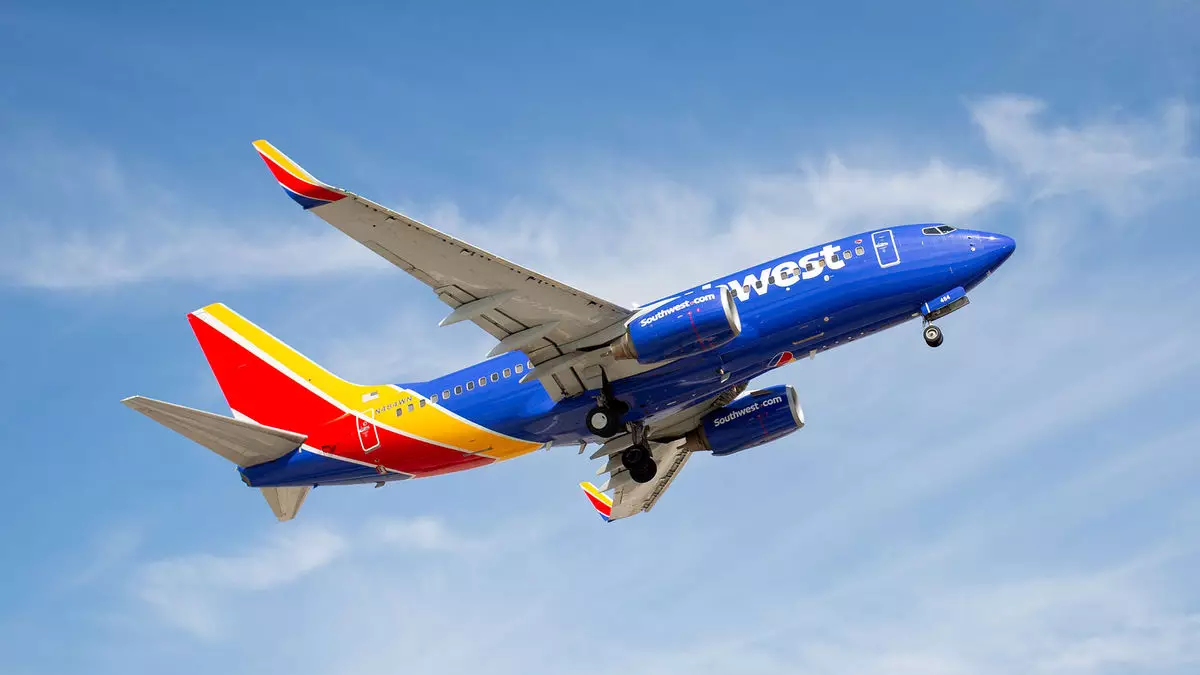Southwest Airlines is gearing up for a significant transformation aimed at achieving $4 billion in additional revenue and an ambitious operating margin of 10% by 2027. At the core of this strategy is action from their CEO, Bob Jordan, and the current board of directors, who face external pressure from Elliott Investment Management—a prominent activist shareholder intent on challenging the leadership with a proxy battle. The backdrop of these developments is the recent Investor Day held on September 26, where the airline outlined its blueprint for revitalizing its operations and restoring its profit margins to historic highs.
In a competitive aviation landscape where other carriers have swiftly adopted similar strategies, Southwest’s plans to introduce extra-legroom seating and a more structured assigned seating arrangement resonate deeply with both consumer demand for comfort and the industry’s shift towards differentiated offerings. These enhancements are expected to be rolled out in phases, with visible modifications starting in the first quarter of 2025. However, the strategic importance of these adjustments lies not just in passenger comfort; they represent a recalibration of Southwest’s core identity as a low-cost carrier that adapts to changing market dynamics.
Elliott Investment Management has seized the opportunity to express skepticism regarding the timeline proposed by Southwest’s leadership. The activist firm contends that such enhancements should be implemented more swiftly, reflecting a more robust vision for the company’s future. This criticism underscores the tension between traditional operational models and innovative practices that are increasingly necessary in a competitive environment.
To fuel this revival, Southwest is focusing on operational efficiency as a cornerstone of its strategy. Key initiatives include the introduction of red-eye flights, which will leverage underutilized fleet capacity while accommodating passenger desires for more flexible travel options. Additionally, the airline is ramping up efforts to reduce aircraft turnaround times, paving the way for improved fleet utilization—a crucial aspect of maintaining competitive costs.
Jordan’s assertion that “nothing will distract us from running a safe and reliable operation” exemplifies his commitment to prioritizing operational integrity amidst these changes. However, the challenge lies in implementing such transitions without alienating loyal customers who have long favored the airline’s established, no-frills approach.
The retrofitting process of Southwest’s aircraft to facilitate extra-legroom seating will involve a meticulous strategy to reconfigure roughly 50 to 100 planes per month, culminating in a fleet that accommodates approximately 30% of its seats with enhanced space. While this commitment reflects a willingness to evolve with consumer preferences, the initial experience surrounding these upgrades could be tricky. For instance, current 31-inch standard seat spacing on Southwest’s 737-7 planes is seen as adequate compared to its larger 737-8 model, where a one-inch reduction is needed to accommodate extra space in certain rows.
Ryan Green, the executive vice president overseeing transformation, has emphasized the importance of technological integration in this transition. The intricate task of modifying over 60 platforms to shift from open seating to assigned seating puts pressure on the airline to execute this strategy flawlessly. The potential complications of mixed seating arrangements could lead to operational hiccups, a risk Southwest’s management is keen to mitigate.
In addition to in-house initiatives, Southwest also intends to launch a partnership with Icelandair, beginning in 2025. This collaboration could enhance connectivity across international borders, driving both revenue and loyalty. By diversifying its route offerings and enhancing ticket selling channels through the partnerships, Southwest aims to capture market segments that previously eluded its core business model.
Moreover, the introduction of “Getaways by Southwest,” a newly branded vacation package service expected to replace the existing outsourced model, signifies the airline’s drive to take control over its ancillary revenue streams. This strategic pivot aims to not only boost profitability but also solidify customer engagement through a more integrated service delivery mechanism.
As Southwest Airlines stands at a crossroads, its management is faced with mounting challenges from activists while working to bolster shareholder confidence through robust operational strategies. The airline’s roadmap toward growth, characterized by new seating configurations, improved operational metrics, and strategic partnerships, signals an awareness of the need to evolve.
Each step taken in this transformative journey carries the weight of expectations from loyal customers and scrutinizing investors alike. Whether Southwest can effectively balance its heritage as a low-cost carrier with the demands of modern air travel remains to be seen, but the forthcoming years will undoubtedly reveal the trajectory of this iconic airline’s adaptability in a rapidly changing landscape.

